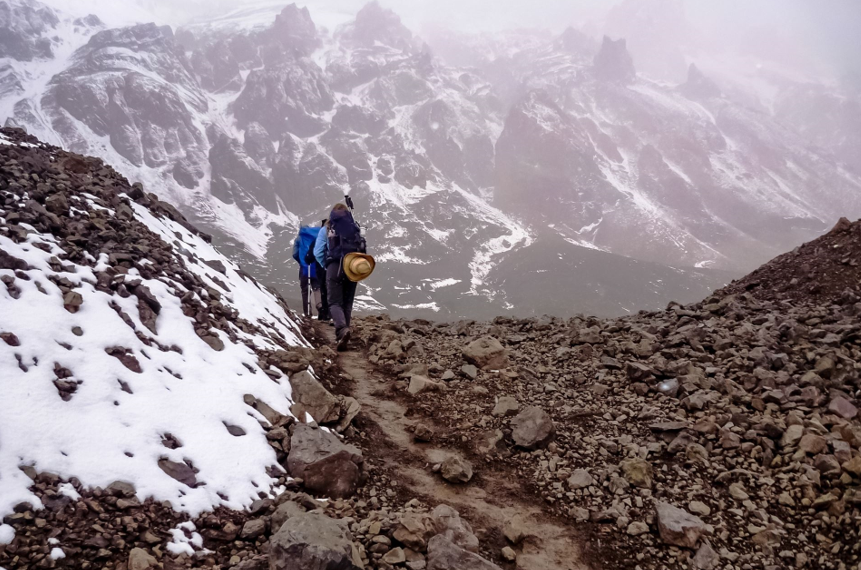The Polish Glacier Route up Aconcagua is an excellent compromise between the more accessible and dangerous routes. This wild Andean glacier is of Himalayan proportions, presenting a complicated climbing task. Also, climbing Aconcagua is more effortless than climbing similar mountains in other faraway ranges because it is easy to get to, and the camps are well equipped. Combine this with the best climbing season (December–February) and a long summit day at about 7,000 meters, which is difficult but safe because we have fixed ropes. You have the ideal training for a Himalayan expedition.
It’s not the same as the Polish Traverse!
The first two camps above British Columbia are shared by the Polish Traverse (also known as the False Polish or 360o route) and the Polish Glacier Route. It is one of the “regular” or “easy” routes up Aconcagua, meaning it does not require any technical climbing skills. The routes share similar-sounding names but are entirely dissimilar. To reach Camp Colera, the normal route’s high camp to the north, the Polish Traverse follows the mountain’s contours.
By contrast, the Polish route stays on the mountain’s north side and sets up a high camp near the glacier’s foot (at 5,863 m). From this camp, our guided parties and the vast majority of climbers go out to conquer the peak. One of the hardest parts of climbing Aconcagua is the long summit day with more than a thousand meters of vertical gain on steep terrain.
First ascent of the Polish Glacier
The Polish Glacier was named after the first known expedition to the Upper Vacas Valley, led by Poles, who successfully scaled the glacier. In the first few months of 1934, six well-known Polish climbers were the first people to reach the top of a series of 6,000-meter peaks in the Central Andes. Mt. Mercedario (6,720 m) and other mountains in the Ramada Range were climbed using self-designed footwear with spikes and tents. Then they began focusing on Aconcagua, the tallest peak in South America at 6,960.80 m (the highest elevation in the Andes). At that point, he’d only been atop the mountain a few times, and each time had been via the normal, northwest face.
Instead, they made the ascent up the Vacas and Relincho valleys, where they camped at an altitude of 4,050 meters. Following that, they spent the night on the glacier and climbed a line that parallels the left side of the glacier and, ultimately, the lengthy summit ridge in just four days. On March 8, 1934, four of them made it to the peak, and by March 11, all six were back at base camp.
Aconcagua Polish Glacier Direct Route with fixed ropes
A group of Argentine mountaineers carved out a new route on the glacier in 1961. Our guides liked this path, which they dubbed the Polish Direct Route.
The long climb up the ridge to the summit can be made much shorter by taking the Polish Glacier Direct Route. This route avoids the classic Polish Route’s increasingly dangerous traverse across the glacier. A few steeper portions (about 550 m of snow and ice) above 6,500 m are the “price” you pay for saving valuable time on summit day. The difference is substantial, considering we have more than a thousand meters of fixed rope.
Every season, Expeditions’ expert crew of guides and porters meticulously installs this fixed rope line on the Polish Glacier’s most crucial terrain. This innovative technology offers clear benefits in terms of safety and speed.

